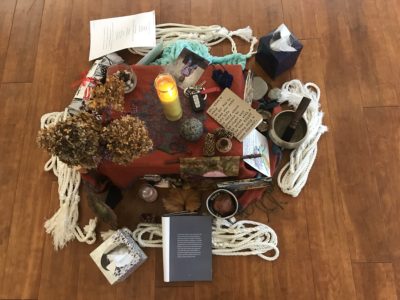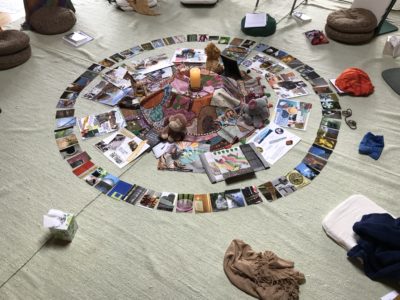
One of the things that I love about hosting people in circle, and teaching about circle, is that I continue to learn things about circle and we people who come to it. Yes, it’s a practice. Yes, these are things remembered — “oh yah, that again.” These are bits of nuancing that I would suggest help improve the strength of the practice — circle as group process methodology, and, circle as rather healthy way of being.
From hosting and teaching yesterday, here’s some of my list that I scribbled into my notebook.
- Tears — are welcomed and need not be apologized for. It remains interesting to me that the default as cultural meeting pattern is to apologize for having tears. Like it’s wrong. In this gathering, my cohost Quanita and I said what we tend to say when someone sheds a few tears and apologizes. “No need to apologize. The unlearning / relearning here is to bring more of ourselves into the room, not less.” That doesn’t mean every aspect of a complete meltdown — that’s a bit different. I’ve loved the skills that I’ve seen in people to be honest about how they are (or transparent, or vulnerable), yet, a bit contained within their own emotional hoop. Oh, and with tears — because we are emotional beings — we encourage people not to rescue the person in tears. What it looks like is people getting their own tissue, or asking for it, rather than a default, yet often unnamed norm of “clean that up.”
- Rim — is what all of us in a circle hold with one another. We each have a job to help hold our part of the container. It’s a bit like forming an edge to keep what is being spoken — stories, questions, wonderings, musings, vulnerabilities — in the circle. Most contemporary meetings are rather bipolar in role descriptions. You’re either the one in charge doing and seeing everything. Or, your are a passive participant not needing to fully engage (and often engaging through phones about other things). The shared responsibility of all in a circle is contribute to holding a rim. Or to hold our part of the bowl, if you will.
- Making it up — is a good skill in circle. It’s what it sounds like when the talking piece comes to us and we don’t know what to say. “I thought I was going to talk about this, but now I feel inspired to share this.” Or, “I forgot to bring an object for the center of this circle, but what I can offer is this scarf that I’m wearing.” Making it up isn’t about bullshitting. It isn’t about telling lies. It isn’t “fake it ’til you make it.” Rather, I’d say that making it up is about a more keen ability to be in the present moment, and share what arises from within us. We’re all learning this. I would suggest this is a non-performative aspect of “being” in circle rather than “doing” circle.
Yes, one of the things about hosting and teaching in circle is that I feel hosted and taught. It’s what a circle tends to gift back to us that sit in them, and that lean in to the possibility that some mystery of being together as humans might just come to the surface for the betterment of who we are and how we are together.





